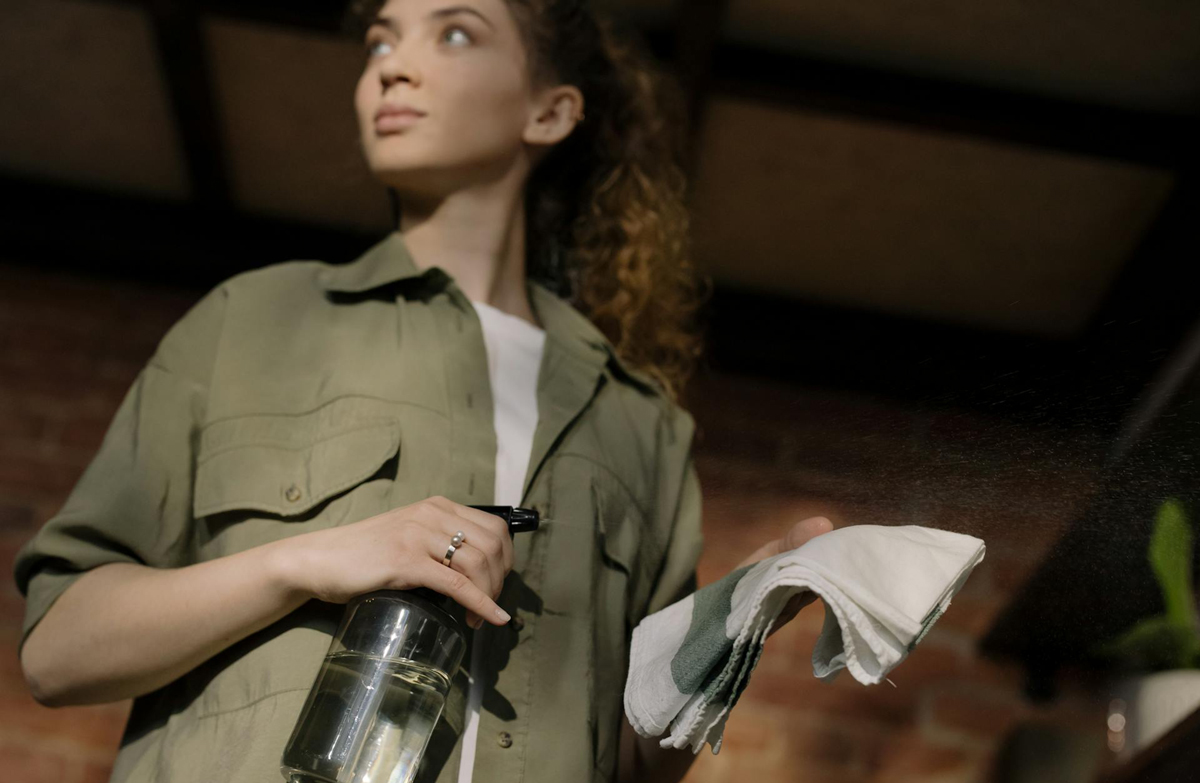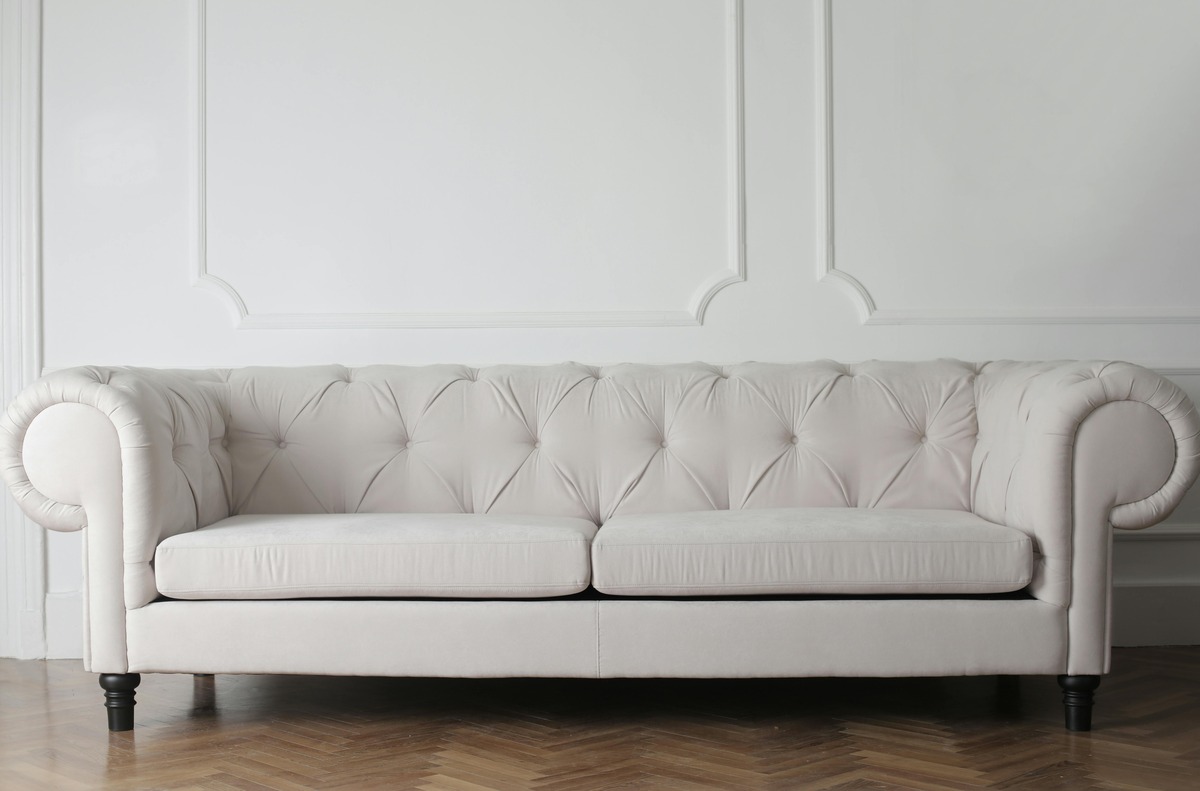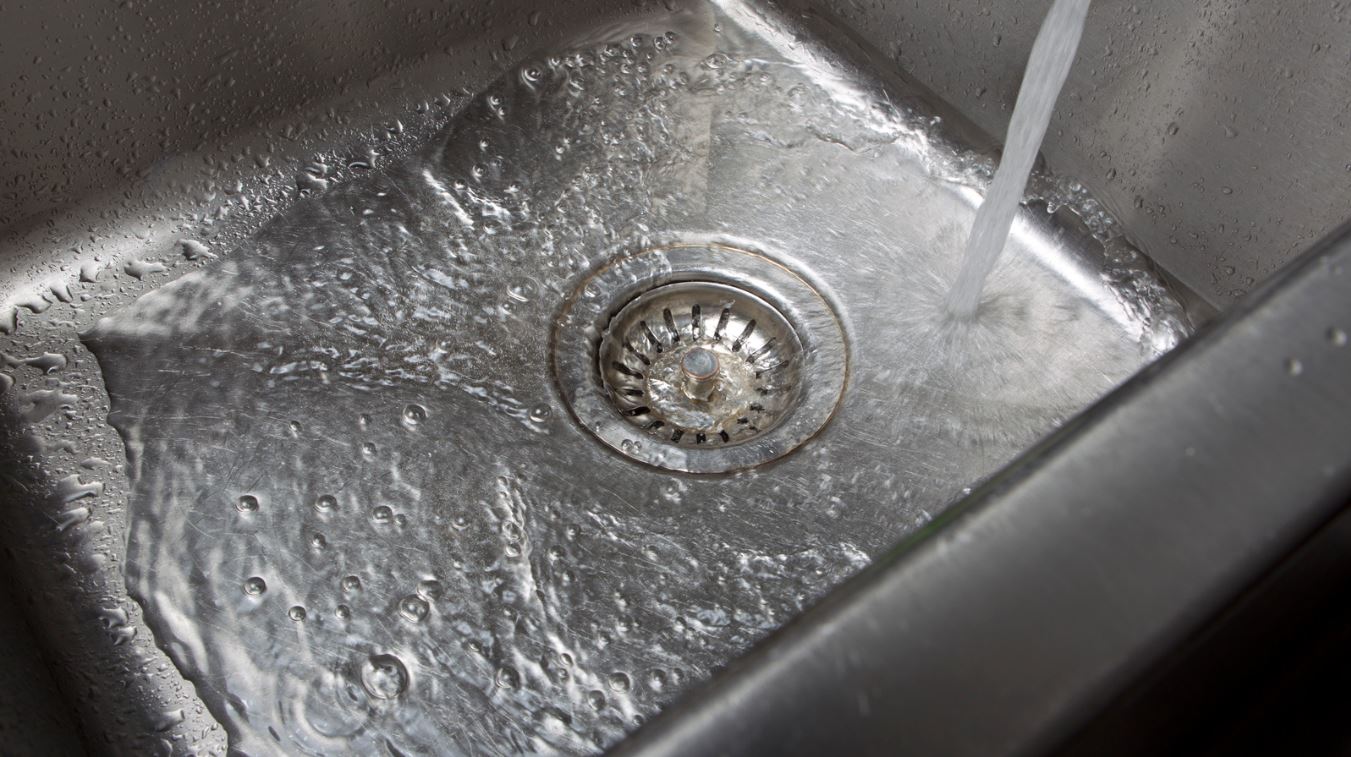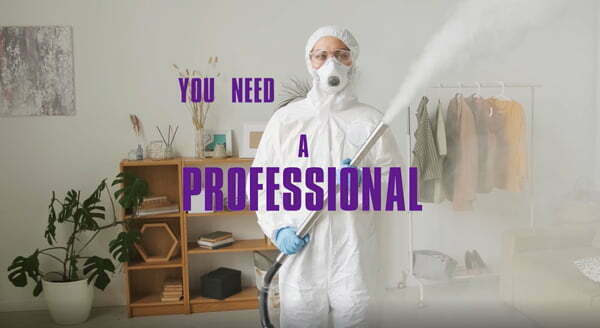It’s important to know how to clean mold since the presence of mold in your home can cause health problems for many people — especially those with conditions such as asthma, COPD, allergies, lung conditions, or who are immune compromised. If you have any of those conditions, you should definitely NOT stay in a home with mold — or even be staying inside the home when it is being cleaned.
Of course, getting to the point where mold has grown to dangerous levels can usually be prevented — so these tips may help you limit your exposure to mold by cleaning it in its early stages, before it becomes a hazard. And if you need professional Mold Remediation services, we’re here for you!
Most commonly, we find mold in bathrooms where there moisture builds up due to lack of ventilation. Mold thrives in warm, humid environments and spreads quickly. Bathroom surfaces are mostly “nonporous” — like sinks, hard countertops, tile or grout — but you may also need to clean mold on “porous” surfaces as well — such as wood or drywall. We’ve got you covered there… read on for the three best mold-killing household chemicals no matter what your surface type.
But First… Dress for Success!
When cleaning mold, it’s best to protect yourself from exposure by wearing protective clothing (like a long sleeved sweatshirt), goggles, gloves and a facemask. Not only will this be important to prevent exposure to the mold itself, but also protect you from possible splash-back of chemical solutions you may be using to clean and kill the mold (like bleach).
What’s the Best Product for Cleaning Mold?
What’s best to use for cleaning mold? Bleach? Vinegar? Hydrogen Peroxide? You have options!
How to Clean Mold Using Bleach
Bleach is probably the most common mold-killer for nonporous surfaces (like tile, grout and ceramic), but not so effective on porous surfaces (like wood or drywall). The CDC guideline is to create a solution by mixing 1 cup bleach with 1 gallon of water. It may be helpful to fill a spray bottle to use when cleaning hard to reach places.
- Apply the bleach solution to the moldy surface
- Let it sit for 15 minutes
- Scrub off the mold — an old toothbrush works well for grout
- Rinse off with water
- Dry the surface thoroughly
The drawback for using bleach is the fumes which can cause irritation, so good ventilation is important. Also, NEVER mix bleach with other chemicals — like ammonia, vinegar, or other cleaning solutions — as the combination may cause dangerous and even potentially deadly fumes!
Another drawback to using bleach is that it may remove color if used on certain colored materials. Test it first on a small unnoticeable area and see if it causes discoloration. If so, use something like vinegar instead.
Finally, it’s best not to use bleach when cleaning mold in a refrigerator as it is not food-safe. Instead, use vinegar (see next).
How to Clean Mold Using Vinegar
Vinegar is another good mold-killer, effective for killing over 82% of mold species on both nonporous AND porous surfaces. It’s a good, inexpensive non-toxic alternative to bleach. Use undiluted white vinegar. Sure, your house may smell like a deli for a while, but it’s safer and less irritating than bleach!
- Apply to the moldy surface (use a spray bottle)
- Let it sit for 1 hour
- Scrub off the mold
- Wipe clean and let the surface dry
How to Clean Mold Using Hydrogen Peroxide
Hydrogen Peroxide — which you can find in most grocery stores and drug stores — is also a moderately effective cleaner, if not a bit more expensive as an option. It works well on nonporous surfaces (tile, grout, ceramics) but not quite as good as bleach. However, it doesn’t have the issue of fumes like bleach does, so if you’re sensitive to bleach’s irritating effects, hydrogen peroxide may be a good alternative.
- Apply hydrogen peroxide to the moldy surface (use a spray bottle)
- Let sit for 10 minutes or until it stops bubbling
- Scrub off the mold
- Wipe clean and let the surface dry
Tips for Cleaning Mold on Porous Surfaces
Whether you use the bleach solution or vinegar for cleaning porous surfaces like wood or drywall, it’s important to note a few things:
- Mix a little dish detergent with your cleaning solution.
- Apply the solution with dish detergent to the surface using a sponge or mop, but be careful not to oversaturate the surface.
- Do not rinse the solution away, but instead allow to air dry.
Last Step – The Cleanup!
It’s important to properly clean up after your efforts in order to prevent the mold from returning, so these tips may help:
- Seal any used rags, gloves, or moldy materials in a garbage bag
- Clean safety equipment like goggles with hot water and soap
- Soak any brushes you used in your bleach solution or vinegar for an hour before rinsing them off.
- Make sure everything is dry before storing.
- Wash your clothes right away — don’t let them sit in the hamper! Use hot water and don’t wash other clothes with them.
We hope these cleaning tips help to reduce your exposure to mold in your home to keep you healthy! For expert help, reach out to us first… Mold Remediation experts are always available.
Whether you need regularly scheduled cleanings, one-time cleanings, move-in / move-out cleanings, or construction cleanup, and even other services like mold remediation, upholstery or carpet steam cleaning and window cleaning… we handle it all, so give us a call. We are your ONE-STOP-SHOP for taking care of your home.
Always… At Your Service!
Call Howard: 949.215.9550







